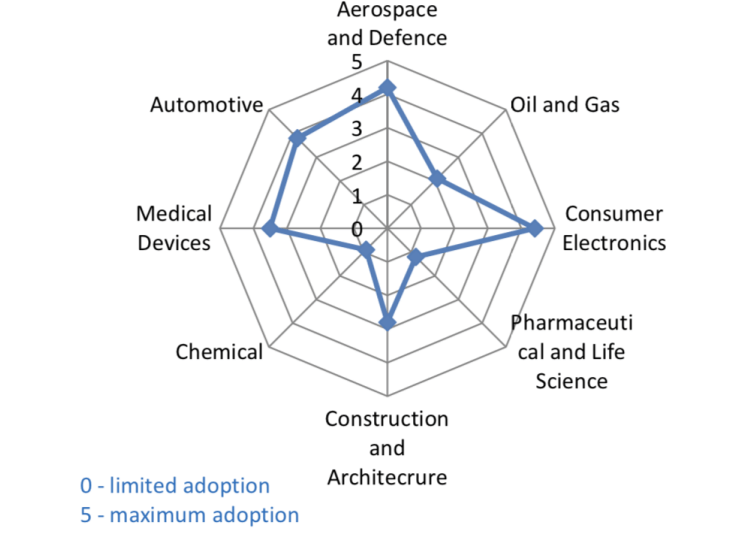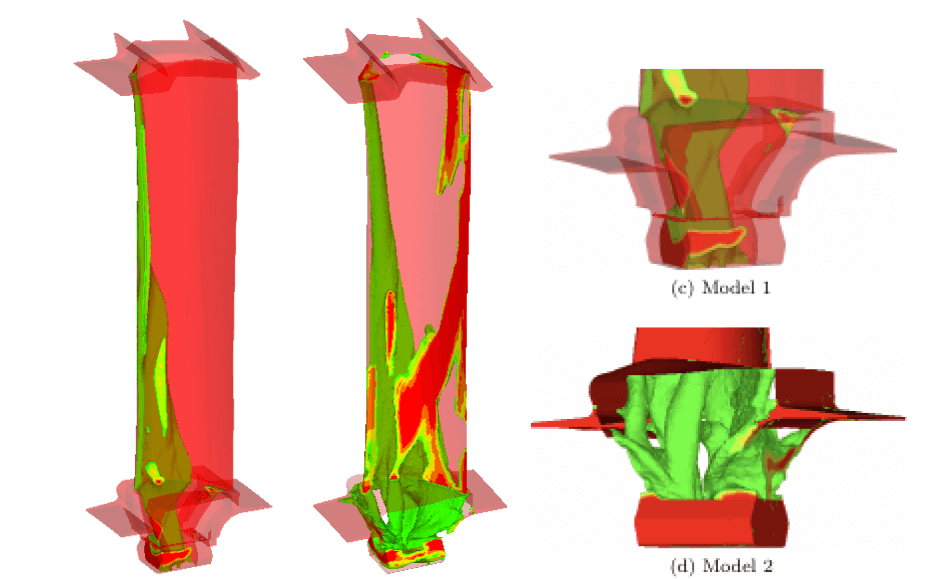In ‘Preliminary optimization of a hollow low pressure turbine blade,’ Lorenzo Abrusci presents a thesis paper exploring additive manufacturing processes for creating critical industrial components. As materials science has advanced rapidly, there are many different choices available for creating parts via 3D printing and additive manufacturing. Abrusci points out how impressive the GE Advanced Turboprop is—35 percent additive manufactured—and meant to power the Cessna Denali single-engine aircraft.
Additive manufacturing offers substantial benefit over conventional methods, and especially in terms of speed in production, and lighter weight (by five percent). Abrusci states that the following are the most popular PDF technologies:
- Selective Laser Sintering (SLS) or Direct Metal Laser Sintering (DMLS) from EOS
- Selective Laser Melting (SLM) from Renishaw
- Electron Beam Melting (EBM) from ARCAM
Additive manufacturing overall offers a substantial benefit to the industrial user as they can enjoy easier and more affordable production over conventional techniques for design for assembly (DFA) and design for manufacture (DFM). AM also allows for direct manufacturing of complex parts, even to include armor, crank slider mechanisms, gears, hinges, joints, and much more. Material waste is reduced, and components can be made with fewer parts—allowing for easier assembly.
Design for additive manufacturing (DFAM) includes the following:
- Analysis of the specifications
- Initial shape
- Definition of a set of parameters
- Parametric optimization
- Validation of the shape
“Assuming to manufacture a part by a single additive manufacturing process, the design process starts with the definition of a set of functional surfaces, whose function is either to help assemble the part onto other parts, to transmit mechanical or thermal loads or to assure liquid or gas tightness and to prevent the part from colliding with other parts as well as to allow fluids circulation,” states Abrusci. “Moreover, the material of the part has to comply with the manufacturing process, as well as behavior requirement.”
In choosing materials, more lightweight components are possible due to parts with higher mechanical properties. Abrusci points out that with AM processes better materials are available such as Cobalt-Chrome, Ti6Al4V and Inconel. In optimization, users tend to be very focused on weight, which is where materials play a large part.
In aqny design for additive manufacturing, industrial users must also consider:
- Optimization method selection
- Optimization responses definition
- Optimization objectives and constraints function definition
The ability to use innovative and lightweight materials make AM processes attractive to the aerospace industry, and more commonly for components like turbine blades—with simplified geometry and ultimate optimization of topology. Avio Aero (a GE Aviation business) is featured in this study, as they sought to leverage optimized topology. The study case for the thesis was a low-pressure turbine rotor blade mounted on an aeronautical turbofan engine.
The basic structure is made up of a fan, compressor, combustion chamber, high/low pressure turbine, and a nozzle. The rotor blade is made up of the shroud, blade body, shank, and dovetail. Validation of the model included:
- Definition of design space and non-design space
- Application of mesh, loads, and constraints
- Static analysis of basic models, comparison with baseline
Topology optimization includes setting functions, responses, parameters, and more to improve performance.
Model 1 includes the overhang constraint, but Model 2, ‘due to a more complex design space,’ requires added modification for convergent optimization.
“The static analysis results match perfectly with the results coming from the topology optimization; the methodology developed is therefore validated,” concluded Abrusci.
“… further steps are necessary to develop an effective business case feasibility study, first of all a preliminary CAD rebuilding needs to be done in order to validate the final design, also with LCF and HCF analyses; in case of high residual stress or other undesired effects, the designer should perform other structural optimizations and, as final step, a complete process simulation.”
The aerospace industry has been embracing 3D printing for decades now, but additive manufacturing innovation has sped up in the past few years—and especially as the technology has hit the mainstream—resulting in antennas for radar systems, brackets, and other types of turbine components.
What do you think of this news? Let us know your thoughts! Join the discussion of this and other 3D printing topics at 3DPrintBoard.com.
[Source / Images: ‘Preliminary optimization of a hollow low pressure turbine blade’]
Subscribe to Our Email Newsletter
Stay up-to-date on all the latest news from the 3D printing industry and receive information and offers from third party vendors.
You May Also Like
3D Printing Unpeeled: New Arkema Material for HP, Saddle and Macro MEMS
A new Arkema material for MJF is said to reduce costs per part by up to 25% and have an 85% reusability ratio. HP 3D HR PA 12 S has been...
3D Printing News Briefs, January 20, 2024: FDM, LPBF, Underwater 3D Printer, Racing, & More
We’re starting off with a process certification in today’s 3D Printing News Briefs, and then moving on to research about solute trapping, laser powder bed fusion, and then moving on...
3D Printing Webinar and Event Roundup: December 3, 2023
We’ve got plenty of events and webinars coming up for you this week! Quickparts is having a Manufacturing Roadshow, America Makes is holding a Member Town Hall, Stratafest makes two...
Formnext 2023 Day Three: Slam Dunk
I’m high—high on trade show. I’ve met numerous new faces and reconnected with old friends, creating an absolutely wonderful atmosphere. The excitement is palpable over several emerging developments. The high...




































